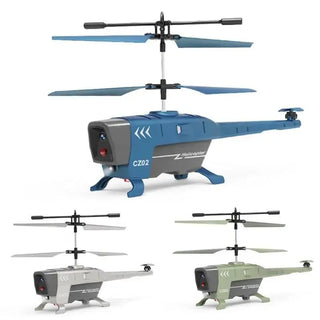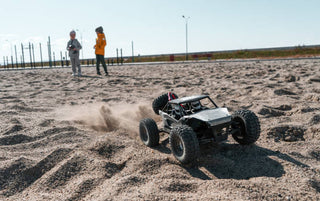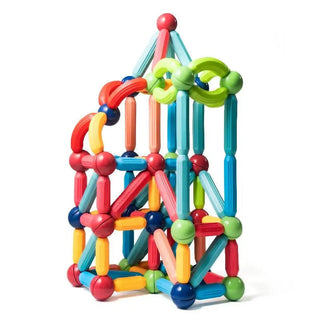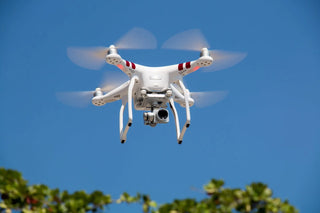As we look ahead to 2025, the world of drone production by country is evolving rapidly. Drones have become integral to various sectors, from agriculture to logistics and defense. This article provides a broad overview of the current state of drone manufacturing across different countries, highlighting key players, technological advances, investment trends, regulatory challenges, and future prospects. Understanding these elements will give us a clearer picture of where the drone industry is headed in the near future.
Key Takeaways
- China dominates the drone market, led by DJI with a 70% market share.
- Emerging companies are gaining traction, particularly in the U.S. and Europe.
- Technological advancements like AI are reshaping how drones are designed and manufactured.
- Investment in the drone sector is booming, with significant contributions from venture capital and government grants.
- Regulatory frameworks are critical and can either spur or hinder market growth in different regions.
Key Players in Drone Production by Country
Leading Manufacturers and Their Market Shares
Okay, so when we talk about who's actually making drones, it's not just about the brand name. It's about who's got the biggest slice of the pie. Right now, a few companies really dominate. You've got your big players that everyone knows, but also some smaller ones nipping at their heels. It's a constantly shifting landscape, especially as tech advances and new regulations come into play. Let's take a look at some of the big names and their approximate market share:
| Manufacturer | Estimated Market Share (2025) |
|---|---|
| DJI | 60% |
| Parrot | 8% |
| Skydio | 6% |
| Autel Robotics | 5% |
| Yuneec International | 3% |
| Others | 18% |
These numbers can change fast, but it gives you a general idea. DJI still holds a significant lead, but other companies are working hard to catch up. The drone industry is dynamic, to say the least.
Emerging Players in the Drone Industry
It's not all about the established giants. There are tons of startups and smaller companies doing cool stuff and trying to break into the market. These emerging players often focus on niche applications or innovative technologies. For example, some are working on hydrogen-powered drones, like Heven Drones, while others are developing advanced multi-drone mission control systems. Keep an eye on these companies; they could be the next big thing. Here are a few to watch:
- Heven Drones (Hydrogen-powered Drones)
- Swarmer (Multi-drone Mission Control)
- F-drones (Maritime Drones)
- GeoNadir (Drone Data Mapping)
Regional Leaders in Drone Technology
Drone production isn't evenly distributed around the world. Some regions are really leading the charge, thanks to a combination of factors like government support, technological expertise, and investment. North America has been a major hub, but the Asia-Pacific region is expected to grow quickly. The United States, United Kingdom, India, Canada, and Australia are major hubs for the drone industry. Cities like London, New York City, Bangalore, Sydney, and Melbourne are leading in drone innovation. Here's a quick rundown:
- North America: Strong in commercial and military applications.
- Asia-Pacific: Rapid growth, especially in agriculture and logistics.
- Europe: Focus on specialized drones and regulatory compliance.
It's interesting to see how different regions are approaching drone technology. Each area has its own strengths and priorities, which shapes the types of drones they produce and the applications they focus on. This regional diversity is a big part of what makes the global drone market so dynamic. Understanding these regional nuances is key to understanding the overall industry. For example, drone agriculture is a big deal in Asia-Pacific.
Technological Innovations Driving Drone Production
It's wild to see how quickly drone tech is changing. Seems like every other week there's some new breakthrough that's making drones smarter, faster, or more useful. Let's take a look at some of the key areas where things are really popping off.
Advancements in Drone Design and Functionality
Drone design is getting seriously creative. We're not just talking about different shapes; it's about materials, power systems, and how they're put together. One of the biggest changes is the move towards modular designs. This means you can swap out parts easily, customize drones for specific jobs, and repair them faster. Think of it like building with LEGOs, but for high-tech flying machines. Also, there's a lot of work being done on making drones more aerodynamic and energy-efficient, which means longer flight times and better performance. For example, drone manufacturers are experimenting with new wing designs and lighter materials to improve efficiency.
Here's a quick look at some design trends:
- Modular Designs: Easier customization and repair.
- Advanced Materials: Carbon fiber, composites for lighter, stronger frames.
- Improved Aerodynamics: Streamlined shapes for better flight.
Impact of AI and Automation on Drone Manufacturing
AI is a game-changer for drones. It's not just about flying; it's about making drones truly autonomous. We're seeing AI used for everything from navigation and obstacle avoidance to data analysis and decision-making. Imagine drones that can inspect bridges, monitor crops, or deliver packages without needing constant human input. That's the direction we're heading. Plus, AI is helping to automate the manufacturing process itself, making it faster and more efficient to produce drones. This includes things like automated assembly lines and AI-powered quality control. The use of autonomous drones is expanding rapidly across various sectors.
Sustainability Trends in Drone Production
People are starting to think more about the environmental impact of drones, and that's leading to some interesting changes. One big trend is the move towards electric propulsion systems. Electric drones are quieter and produce zero emissions, which is a big plus for urban environments. There's also a push to use more sustainable materials in drone manufacturing, like bio-based plastics and recycled components. And companies are looking at ways to recycle old drones and batteries to reduce waste. It's all about making drone tech more eco-friendly. The industry is also exploring drone battery management systems to increase efficiency and lifespan.
Drones are becoming more sustainable, with a focus on electric power, eco-friendly materials, and recycling programs. This shift is driven by environmental concerns and the desire to create a more responsible industry.
Investment Trends in Global Drone Production
Major Funding Sources for Drone Startups
Okay, so where's all the money coming from that's fueling the drone craze? Turns out, it's a mix of venture capital, government grants, and even some big corporations throwing their hats in the ring. The average investment value is around USD 27.2 million per funding round, which shows a lot of confidence in drone tech. You've got your usual suspects like venture capital firms always on the lookout for the next big thing, but also some surprising players like defense contractors and agricultural companies. They're all seeing the potential for drones to shake things up in their respective fields. It's not just about building cool gadgets; it's about finding real-world applications that can save time, money, or even lives. For example, drone data mapping is becoming increasingly popular.
Venture Capital's Role in Drone Innovation
Venture capital is a huge deal for drone startups. These firms aren't just handing out cash; they're providing expertise, connections, and a whole lot of pressure to deliver results. They're betting big on the future of drones, and they're not afraid to take risks on unproven technologies. But it's not all sunshine and rainbows. Venture capitalists want to see a return on their investment, and that means startups need to have a clear path to profitability. This can lead to some intense competition and a constant need to innovate. Some of the top investors include Goldman Sachs, Baidu, and The Rise Fund. They've invested substantial amounts, totaling over USD 1 billion.
Government Grants and Support for Drone Development
Governments around the world are starting to realize the potential of drone technology, and they're putting their money where their mouth is. Grants, tax breaks, and other forms of support are becoming increasingly common, especially for companies working on socially beneficial applications like environmental monitoring or disaster relief. This support can be a game-changer for startups, providing them with the resources they need to develop their technology and scale their operations. The U.S. Department of Defense supports 17 companies with an investment totaling USD 2 million, indicating a varied interest in drone advancements.
It's interesting to see how different countries are approaching drone development. Some are taking a hands-off approach, while others are actively promoting the industry through targeted investments and regulatory reforms. It's a bit of a Wild West situation right now, but it's clear that governments are starting to recognize the strategic importance of drone technology.
Here's a quick look at some key investment stats:
- Over 2000 investors have participated in more than 7000 funding rounds.
- More than 3000 companies have received investments.
- The autonomous drone market is forecast to reach USD 25.24 billion in 2025, growing at a CAGR of 21.7%.
Regulatory Landscape Affecting Drone Production
International Regulations on Drone Manufacturing
Navigating the world of drone regulations can feel like trying to solve a Rubik's Cube blindfolded. Different countries have different rules, and sometimes those rules change faster than you can say "unmanned aerial vehicle." The lack of globally standardized regulations creates challenges for manufacturers who want to sell their products internationally. It's a bit of a headache, honestly.
- Some countries focus on safety, requiring extensive testing and certification.
- Others are more concerned with security, limiting where drones can fly and who can operate them.
- And then there are the countries still figuring things out, leaving manufacturers in a regulatory limbo.
It's important to keep an eye on how these international regulations are evolving. What might be allowed today could be restricted tomorrow, and vice versa. Staying informed is key to staying competitive.
Country-Specific Compliance Requirements
Each country has its own unique set of hoops for drone manufacturers to jump through. Take the U.S., for example. The FAA has its own set of rules, and getting a drone license is a must. Then you have Europe, with its EASA regulations, which are different again. And don't even get started on some of the more obscure requirements in other parts of the world. It's a compliance minefield!
Here's a quick look at some key areas where countries differ:
- Airspace restrictions: Where drones can and can't fly.
- Registration requirements: Who needs to register their drones and how.
- Pilot certification: What qualifications are needed to operate a drone commercially.
Impact of Regulations on Market Growth
Regulations can either help or hurt the drone market. Too many rules, and innovation gets stifled. Not enough rules, and you risk safety and security issues. It's a balancing act. Supportive regulatory shifts are needed to foster growth.
| Regulation Type | Impact on Market Growth making it difficult for smaller players to compete. The drone industry continues its consolidation journey, so it's something to watch out for.
Market Applications of Drones by Country

Agricultural Uses of Drones
Drones are changing how farming works. Instead of walking fields, farmers can use drones to check on crops, spot problems early, and even spray fields more precisely. This means less waste and better harvests. In some countries, like Japan, where the population is aging and fewer people are farming, drones are becoming essential. They help farmers do more with less labor. The drone industry's growth is also creating new jobs in rural areas, from drone pilots to data analysts who interpret the information collected by drones.
- Crop monitoring and health assessment
- Precision spraying of pesticides and fertilizers
- Yield prediction and mapping
Drones in Logistics and Delivery Services
Drones are starting to make a real impact on how things get delivered, especially in places where it's hard to get to by car or truck. Think about delivering medicine to remote villages or getting packages to people quickly in crowded cities. Drones can often do it faster and cheaper. Companies are testing drone delivery in different countries, but there are still rules and regulations to figure out. For example, how far can a drone fly? What happens if it breaks down? These are the questions that governments and companies are working on together. The commercial drone market is expected to grow significantly, reaching USD 41.89 billion in 2025.
- Last-mile delivery in urban areas
- Delivery of medical supplies to remote locations
- Inspection of infrastructure, such as bridges and power lines
Military and Defense Applications of Drones
Drones have become a big part of modern military operations. They're used for everything from spying on enemy positions to carrying out attacks. The US military, for example, uses drones extensively for surveillance and reconnaissance. Other countries are also developing their own drone programs. The use of drones in warfare raises some serious ethical questions. Who is responsible when a drone makes a mistake? How do we prevent drones from being used to violate human rights? These are important questions that need to be answered as drone technology continues to evolve. China is among the top ten countries in the drone market.
Drones offer a way to gather intelligence without putting soldiers in harm's way. They can stay in the air for long periods, providing constant surveillance of an area. This can be a huge advantage in a conflict zone.
Here's a simple table showing the estimated military drone spending by country (in USD billions) for 2025:
| Country | Estimated Spending |
|---|---|
| USA | 15 |
| China | 8 |
| Russia | 4 |
| UK | 2 |
| France | 1.5 |
Challenges Facing Drone Production by Country
Supply Chain Issues in Drone Manufacturing
Okay, so let's talk about the messy side of making drones. It's not all sleek designs and cool tech. A big headache is the supply chain. Getting all the parts needed to build a drone can be a real pain, especially with everything going on in the world. Think about it: you need specialized cameras, high-performance batteries, GPS modules, and a bunch of other stuff. If one supplier has a problem, the whole production line can grind to a halt. This dependency on a global network makes drone manufacturers vulnerable to disruptions.
- Component Shortages: Sometimes, there just aren't enough parts to go around.
- Geopolitical Instability: Trade wars and political tensions can mess with the flow of goods.
- Logistics Nightmares: Shipping stuff across borders is never easy, with customs, delays, and extra costs.
It's like trying to bake a cake when the store is out of flour, eggs, and sugar. You can have the best recipe in the world, but you're not making anything without the ingredients. Drone companies are constantly scrambling to find reliable suppliers and keep their production lines moving. It's a never-ending balancing act.
Technological Barriers to Entry
Thinking about jumping into the drone game? Well, it's not as simple as setting up shop and slapping some propellers on a frame. The tech side of things is seriously complex. You're talking about advanced materials, sophisticated software, and intricate engineering. It takes serious know-how and investment to even get a foot in the door. Plus, the tech is always changing, so you have to keep up or get left behind. Securing drone patents is also a big deal.
- High R&D Costs: Developing new drone tech is expensive.
- Skilled Labor Shortage: Finding engineers and technicians who know their stuff is tough.
- Rapid Technological Advancements: What's cutting-edge today is old news tomorrow.
Market Competition and Consolidation
The drone market is getting crowded, and it's only going to get more intense. You've got established giants like DJI, plus a bunch of smaller companies all fighting for a piece of the pie. And as the market matures, we're seeing more consolidation, with bigger players buying up smaller ones. This means it's getting harder for new companies to compete and survive. The commercial drone market is definitely feeling the pressure. It's a dog-eat-dog world out there, and only the strongest will survive. Here's a quick look at the market share:
| Company | Market Share (2025 est.) |
|---|---|
| DJI | 65% |
| Autel Robotics | 10% |
| Skydio | 5% |
| Parrot | 3% |
| Other | 17% |
- Price Wars: Companies are cutting prices to gain market share, which hurts everyone's profits.
- Brand Recognition: It's hard to compete with established brands that everyone knows and trusts.
- Regulatory Hurdles: Dealing with different regulations in different countries adds to the complexity and cost. Navigating these challenges is key for drone companies to thrive.
Future Trends in Drone Production
Predicted Growth Areas for Drone Technology
The drone industry is buzzing, and it's not just hype. We're seeing real growth and innovation across the board. From agriculture to delivery services, drones are finding new applications every day. One area to watch is drone-in-a-box solutions, which allow for continuous operations without constant human intervention. Also, keep an eye on swarm technology; the potential to reshape commercial drone operations is huge. The global drone market is projected to reach USD 54.6 billion by 2025, growing at a compound annual growth rate (CAGR of 7.7%) from 2024.
- Precision Agriculture: Drones equipped with sensors are optimizing crop management.
- Last-Mile Delivery: Expect to see more drones handling package delivery in urban and rural areas.
- Infrastructure Inspection: Drones are making it safer and cheaper to inspect bridges, power lines, and other critical infrastructure.
The drone industry is experiencing a surge in innovation, driven by advancements in AI, battery technology, and materials science. This is leading to the development of more capable, efficient, and versatile drones that can perform a wider range of tasks.
The Role of Drones in Smart Cities
Smart cities are all about using technology to improve the quality of life for residents, and drones are playing a key role. They can be used for everything from traffic monitoring to public safety. Imagine drones providing real-time data on traffic congestion, air quality, and even crime hotspots. It's not just about surveillance, though. Drones can also be used to deliver essential supplies, inspect infrastructure, and even provide Wi-Fi hotspots in underserved areas. The rise of AI-Driven Autonomy is also a key factor.
Potential for Drone Integration in Various Industries
Drones are no longer just a niche gadget for hobbyists. They're becoming an integral part of many industries. In construction, drones are used for site surveying and progress monitoring. In energy, they're inspecting pipelines and wind turbines. Even in entertainment, drones are being used for aerial photography and filmmaking. The possibilities are endless. The commercial drone market is evolving rapidly, and we're only just scratching the surface of what's possible. The drone sector has received over 29 000 patents and more than 6000 grants, demonstrating its dedication to research and development.
As we look ahead, the future of drone production is bright and full of exciting possibilities. Innovations in technology are making drones smarter, more efficient, and easier to use. With advancements in materials and design, we can expect lighter and more durable drones that can fly longer distances. If you want to stay updated on the latest trends and developments in drone technology, visit our website for more information!
Wrapping Up: The Future of Drone Production
As we look ahead to 2025, the drone industry is clearly on the rise. Different countries are stepping up their game, each bringing unique strengths to the table. The U.S. and China are leading the pack, but places like India and Australia are making waves too. With more jobs being created and investments pouring in, it’s a pretty exciting time for anyone involved in this field. Sure, there are challenges, especially with regulations and safety concerns, but the potential is huge. Drones are becoming a part of everyday life, from agriculture to delivery services. So, whether you’re a tech enthusiast or just curious, keep an eye on how this industry evolves. It’s going to be a wild ride!
Frequently Asked Questions
What countries are the biggest producers of drones?
Some of the largest drone manufacturers are from the United States, China, and Europe. Companies like DJI from China and several U.S. firms lead the market.
How are drones being used in agriculture?
Drones are used in farming for tasks like crop monitoring, spraying pesticides, and mapping fields. They help farmers work more efficiently.
What new technologies are being developed for drones?
Innovations include better battery life, advanced cameras, and AI features that help drones fly smarter and perform more tasks.
How is the government supporting the drone industry?
Many governments provide grants and funding to help new drone companies grow. They also create rules to ensure drones are used safely.
What challenges does the drone industry face?
The drone industry deals with issues like supply chain problems, strict regulations, and competition among many companies.
What future trends are expected for drones?
In the future, drones are expected to play a big role in smart cities, delivery services, and other industries as technology improves.




















